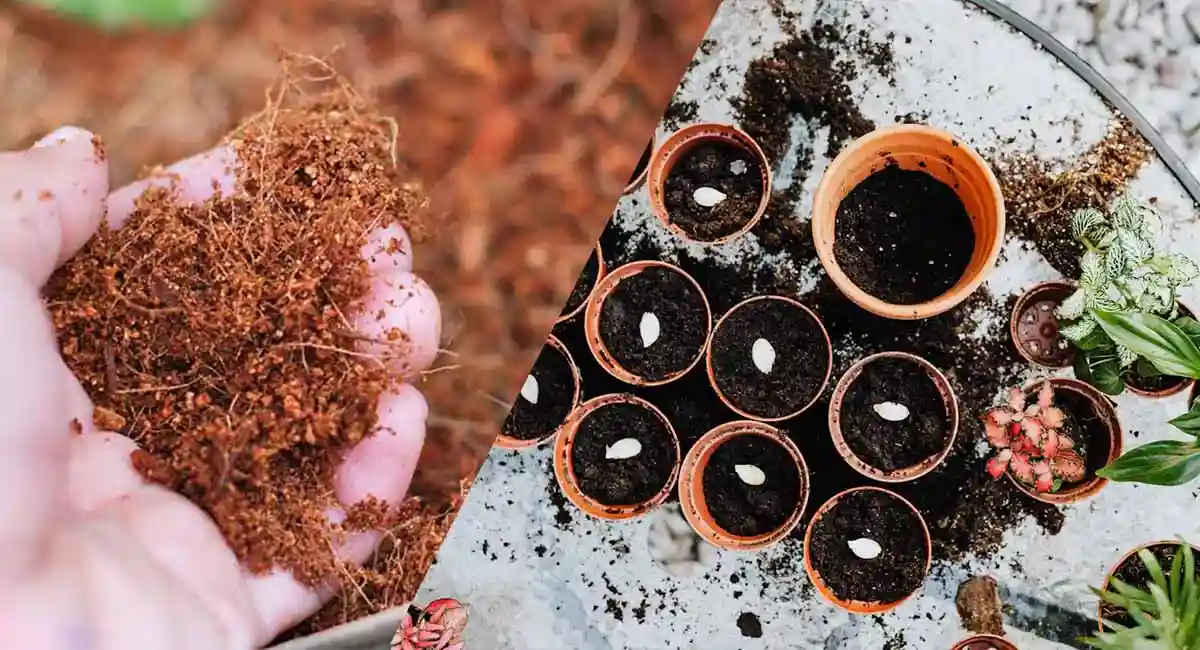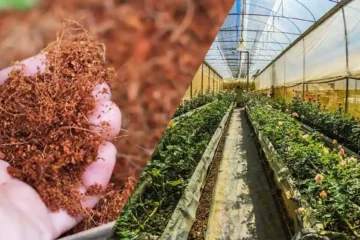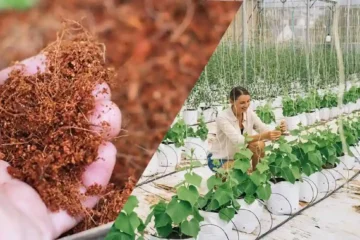Cocopeat, also known as coir pith or coir dust, is a natural fiber made from the husk of coconuts. It’s a byproduct of the coir industry, where the fibrous husks are processed for various uses, including the production of ropes, mats, and brushes. The remaining dust-like material is what we call cocopeat. Its popularity has surged in recent years, especially in horticulture and gardening, due to its excellent water retention properties, sustainability, and versatility. This article delves into the different types of cocopeat, their benefits, and their applications.
Types of Cocopeat
Cocopeat comes in several forms, each catering to specific horticultural needs. The main types include:
1. Fine Cocopeat
Fine cocopeat is characterized by its small particle size, which makes it highly effective in retaining moisture. This type is particularly useful for seed starting and growing delicate plants that require consistent hydration. The fine texture allows for excellent root aeration while maintaining sufficient moisture, making it ideal for germination and initial plant growth stages.
2. Medium Cocopeat
Medium cocopeat has a slightly larger particle size compared to fine cocopeat. It balances water retention and aeration, making it suitable for a wide range of plants, including vegetables and ornamental plants. This type is versatile and is commonly used in potting mixes to improve soil structure and moisture retention.
3. Coarse Cocopeat
Coarse cocopeat consists of larger particles, providing better aeration and drainage compared to finer grades. It’s often used in hydroponic systems and as a soil amendment for heavy clay soils, where improved drainage is essential. Coarse cocopeat is also beneficial for growing plants that require less moisture and more air around their roots, such as succulents and certain types of orchids.
4. Cocopeat Blocks and Briquettes
Cocopeat is often compressed into blocks or briquettes for easy storage and transportation. These blocks expand significantly when soaked in water, making them convenient for gardeners and commercial growers alike. The expanded cocopeat can then be used directly or mixed with other growing mediums to suit specific plant needs.
5. Cocopeat Discs and Grow Bags
Cocopeat discs are pre-formed and designed for small-scale planting, such as in seed trays or small pots. They are convenient for starting seeds or growing individual plants. Grow bags filled with cocopeat are another popular option, especially for urban gardening and hydroponic setups. These bags provide a ready-to-use growing medium that is lightweight and easy to handle.
Benefits of Cocopeat
Cocopeat offers numerous benefits that make it an attractive choice for gardeners, farmers, and environmentalists. Some of the key advantages include:
1. Excellent Water Retention
Cocopeat can retain water up to ten times its weight, ensuring that plants have a consistent supply of moisture. This is particularly beneficial in dry climates or during periods of water scarcity. The high water retention capacity also reduces the frequency of watering, saving time and effort for gardeners.
2. Improved Soil Aeration
Despite its excellent water retention, cocopeat also provides good aeration for plant roots. This balance helps prevent waterlogging and root rot, promoting healthy root development. The fibrous structure of cocopeat allows for adequate airflow, which is crucial for the respiration of plant roots.
3. Sustainable and Eco-Friendly
Cocopeat is a renewable resource derived from coconut husks, which are often considered waste products. Using cocopeat helps reduce environmental impact by recycling agricultural byproducts. Additionally, cocopeat is biodegradable and does not contribute to soil pollution, making it an eco-friendly choice for sustainable gardening.
4. Neutral pH and Low Salinity
Cocopeat typically has a neutral pH, making it suitable for a wide range of plants without the need for pH adjustments. It also has low salinity compared to other growing mediums, reducing the risk of salt buildup that can harm plants. These characteristics make cocopeat a versatile and reliable growing medium for various horticultural applications.
5. Disease Resistance
Cocopeat is resistant to many soil-borne pathogens and pests, which can help reduce the incidence of plant diseases. The sterilization process that cocopeat undergoes during production eliminates harmful microorganisms, providing a healthier growing environment for plants. This disease resistance is particularly beneficial in greenhouse and indoor growing conditions.
Applications of Cocopeat
The versatility of cocopeat allows it to be used in various horticultural and agricultural applications. Some of the most common uses include:
1. Potting Mixes
Cocopeat is a popular component of potting mixes due to its water retention, aeration, and nutrient-holding properties. It is often mixed with other materials such as perlite, vermiculite, and compost to create a balanced growing medium for container plants. The addition of cocopeat to potting mixes improves the overall structure and performance of the soil.
2. Seed Starting
The fine texture of cocopeat makes it ideal for starting seeds. It provides a stable and moist environment that encourages germination and early root development. Seedlings grown in cocopeat have strong root systems and can be easily transplanted to larger containers or garden beds without experiencing transplant shock.
3. Hydroponics
Cocopeat is widely used in hydroponic systems as a growing medium due to its ability to retain moisture and nutrients while providing adequate aeration. It supports the growth of a variety of hydroponic crops, including leafy greens, herbs, and vegetables. The use of cocopeat in hydroponics enhances plant growth and yields by maintaining optimal moisture levels and nutrient availability.
4. Soil Amendment
Adding cocopeat to garden soil can improve its structure and fertility. Cocopeat helps to loosen heavy clay soils, enhancing drainage and aeration. In sandy soils, it increases water retention and nutrient-holding capacity. By improving soil structure, cocopeat promotes healthy root growth and overall plant vigor.
5. Landscaping and Lawn Care
Cocopeat is used in landscaping and lawn care to improve soil health and promote lush, green growth. It can be incorporated into garden beds, flower borders, and turf areas to enhance soil moisture and fertility. Cocopeat is also used in topdressing lawns to improve soil texture and water retention, leading to healthier and more resilient grass.
6. Green Roofs and Vertical Gardens
Cocopeat is an excellent choice for green roofs and vertical gardens due to its lightweight and moisture-retentive properties. It provides a stable growing medium that supports plant growth in these unique and space-saving gardening systems. The use of cocopeat in green roofs and vertical gardens helps to reduce urban heat islands, improve air quality, and increase green spaces in urban environments.
7. Mushroom Cultivation
Cocopeat is used as a substrate in mushroom cultivation due to its ability to retain moisture and support fungal growth. It provides an ideal environment for mushroom spores to germinate and develop into mature fruiting bodies. The use of cocopeat in mushroom cultivation leads to higher yields and better quality mushrooms.
Conclusion
Cocopeat is a versatile, sustainable, and highly effective growing medium with a wide range of applications in horticulture and agriculture. Its excellent water retention, soil aeration, and disease resistance properties make it an ideal choice for gardeners, farmers, and environmentalists alike. Whether used in potting mixes, seed starting, hydroponics, or landscaping, cocopeat offers numerous benefits that enhance plant growth and contribute to sustainable gardening practices. By understanding the different types of cocopeat and their specific uses, gardeners can make informed decisions to optimize their growing conditions and achieve successful plant growth.


